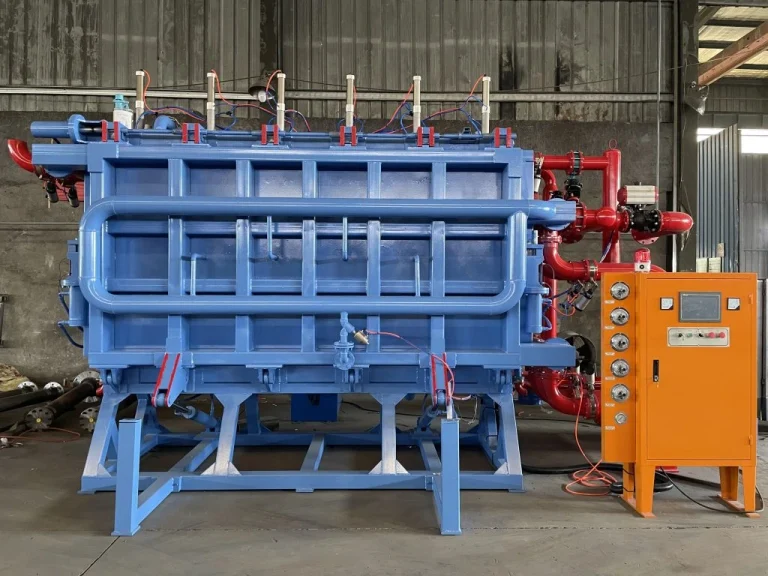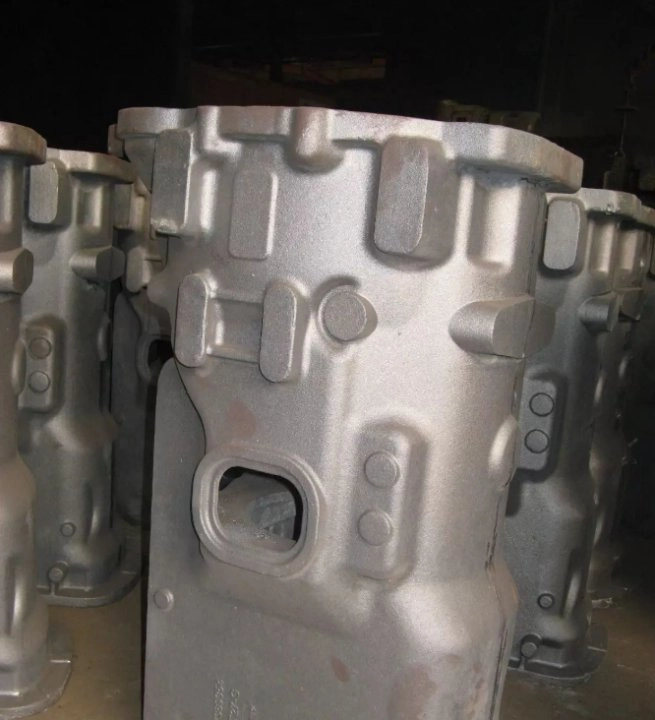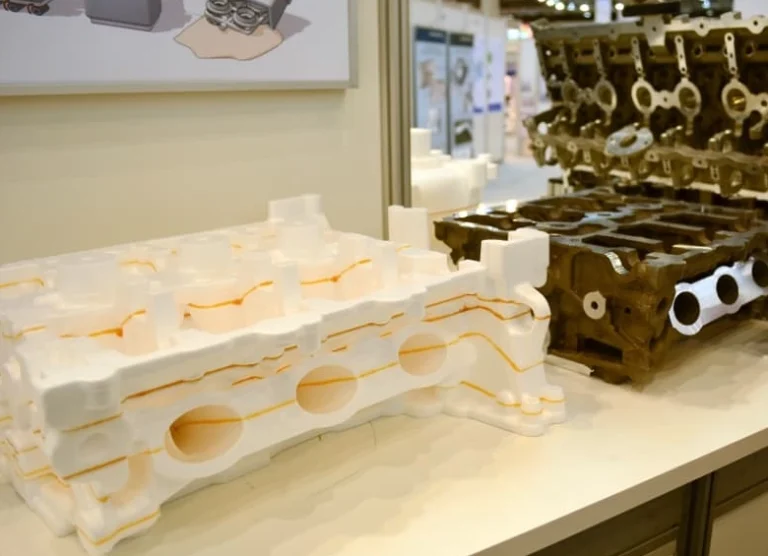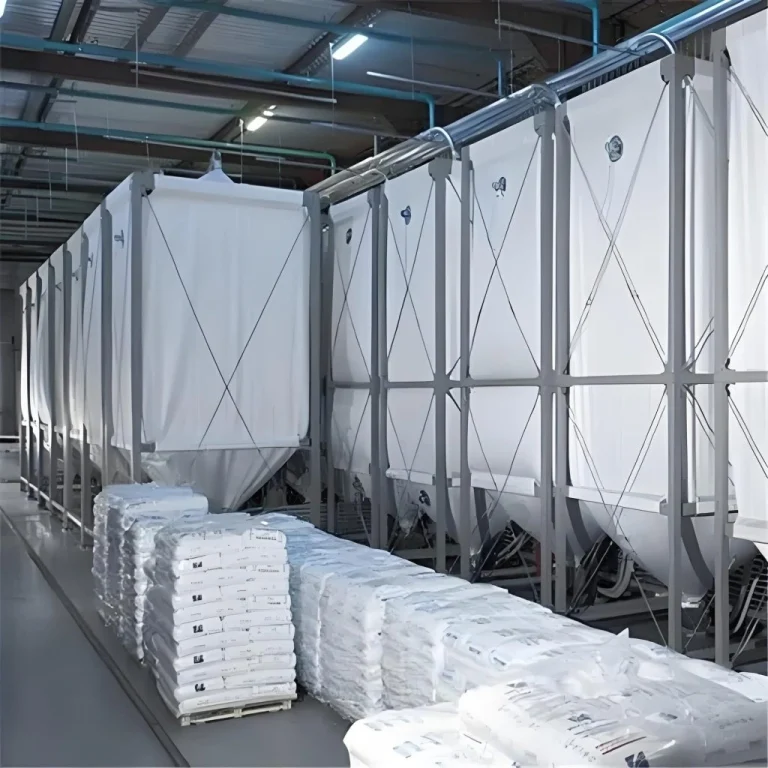What is Lost Foam Hollow-Shell Casting
Lost foam hollow – shell casting is a casting process in which molten metal solidifies in a pre – fabricated lost foam hollow shell.
Lost foam hollow-shell casting uses a strong, heat-resistant new coating. It burns away the EPS foam inside the mold first. This creates a hollow shell with very little leftover carbon. Then, high-temperature molten metal is poured in. This is an advanced and practical lost foam casting method. Its biggest feature is the whole process. From making the model to pouring the casting, it’s simple, dependable, fast, efficient, and low-cost. It can effectively eliminate carbon defects caused by EPS. The result is high-quality castings, close to the level of investment precision casting.

Compared to traditional lost foam casting used worldwide for years, this method adds one easy step. Just a few minutes before pouring, the EPS foam is burned out. This happens by lighting a fire at the sprue and riser. All other steps are the same as regular lost foam casting. No changes or extra tools are needed. As long as there’s flammable gas, the foam can be burned before pouring. The process is simple and convenient.
The process skips parting surfaces and cores used in old sand casting. It greatly improves casting complexity and surface smoothness.It’s widely used in aerospace, car-making, military, and other high-tech fields.
Process Flow
The lost foam hollow-shell casting process involves several precise steps to ensure the production of high-quality castings:
Foam Model Preparation:
EPS, STMMA, or EPMMA beads are used to create foam models identical to the casting through pre-foaming, aging, and molding. This step involves shaping the foam model into the desired geometry of the final product.
Coating Application:
The model is coated with multiple layers of refractory coatings and dried to form a high-strength ceramic shell. This coating ensures thermal resistance and structural integrity during the casting process.

Hollow-Shell Formation:
The coated model is heated to 650-800°C to fully gasify the foam, leaving a hollow ceramic shell. This step creates the mold cavity needed for metal pouring.
Negative-Pressure Pouring:
High-temperature molten metal is poured into the shell under dry sand negative pressure, replacing the foam and solidifying. Negative pressure ensures smooth filling of metal into intricate mold details.

Cooling and Cleaning:
After cooling, the ceramic shell is removed by vibration or water pressure, followed by final machining. This step reveals the finished casting ready for any additional processing.
Applications
Lost foam hollow-shell casting has many uses across different industries:
Aerospace
Complex parts like aircraft engine blades, missile nozzles, and combustion chambers are made this way. The method handles tricky shapes well.
Automotive Industry
Aluminum alloy cases and steering parts benefit from this process. It fixes porosity problems. It also supports light designs.
Energy Sector
Key parts for wind power gear and nuclear reactor structures are made using this method. It offers great accuracy.
Advantages
Lost foam hollow-shell casting has many benefits:
High Precision
It achieves accuracy up to CT7-9. Surface smoothness is as fine as Ra3.2-12.5μm. This cuts post-machining needs by 40-50%.
Complex Shapes
No cores are needed. This allows easy making of tricky inner spaces, thin walls, and deep gaps. These are hard with old methods.
Energy-Saving & Eco-Friendly
Dry sand reuse is over 95%. No chemical binders are used. Exhaust emissions are low. This makes it a green choice.
Cost-Effectiveness
No wooden molds are needed for single-piece production. This cuts costs by over 30% in large-scale production.
Quality Control
Quality control is key in lost foam hollow-shell casting. It ensures steady results:
Foam Model Standards
Foam density is kept at 0.018-0.025g/cm³. The pre-foaming ratio is 30-40x. This ensures size stability during processing.
Coating Process Parameters
Coating thickness matters. Surface coating is 0.5-1mm. Back coating totals 3-7.5mm. Drying happens at 51-65℃. Humidity is 60-70%.
Pouring Parameters
Pouring temperature is set 30-50℃ higher than sand casting. Negative pressure stays at 0.04-0.06MPa. This gives the best results.
These strict controls ensure castings meet tough industry standards. They minimize flaws or errors during production.
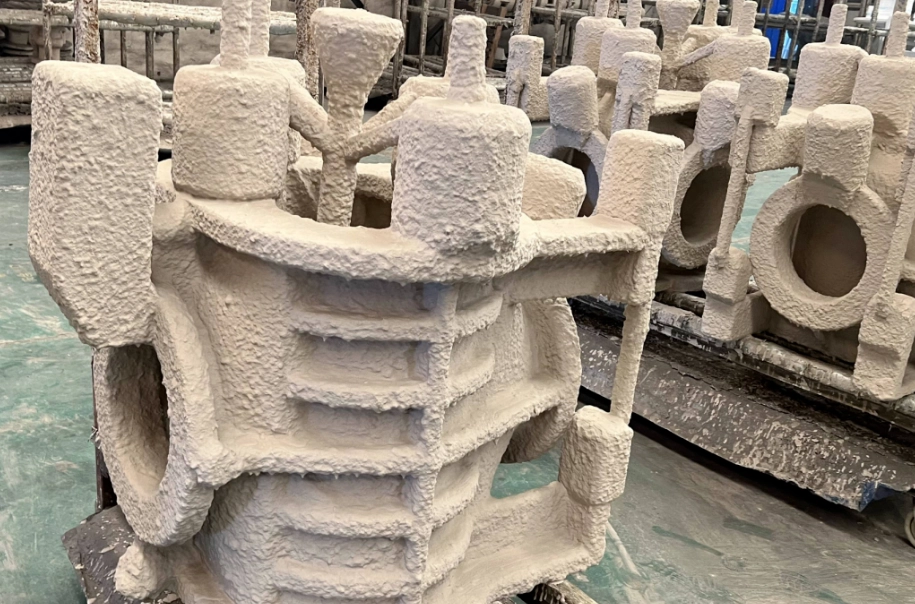
International Standards and Patents
Lost foam hollow-shell casting follows strict global standards. This ensures steady quality and dependability. ISO 16468:2025 sets rules for precision casting. JB/T 14561-2025 covers production line standards for lost foam casting. These rules help makers worldwide. They allow smooth use in global supply chains. The process is also protected by patents. These secure its new methods and tech. Only approved groups can use these advances. This protects ideas while encouraging more research.
Safety and Environmental Compliance
Safety rules are vital in lost foam hollow-shell casting. Workers must wear protective gear. This prevents burns from hot materials. Equipment care is also key. Regular checks keep negative pressure systems stable during use.
Environmental compliance is a big strength. Dry sand reuse is over 95%. This cuts waste a lot. No chemical binders are used. This reduces harmful emissions. The process doesn’t release wastewater. It uses a closed-loop air energy heat recovery system. This shows its focus on being eco-friendly.
Industry Development and Research Trends
China leads the world in lost foam casting production. Output is expected to top 1 million tons by 2025. Teams like Liu Yuman’s are pushing for better quality. They focus on green practices. In Western countries, research targets light aluminum alloy castings for cars. Japan combines V-process tech with lost foam methods. This boosts accuracy.
Academic studies keep advancing the field. Research on foam breakdown aims to improve material performance during gasification. Work on coating mixes seeks to strengthen ceramic shells. It also improves heat resistance. High-frequency vibration filling methods are being tested. These ensure even metal flow into complex mold spaces.
Choose Hangzhou Ouchen Technology Co., LTD EPC Equipment
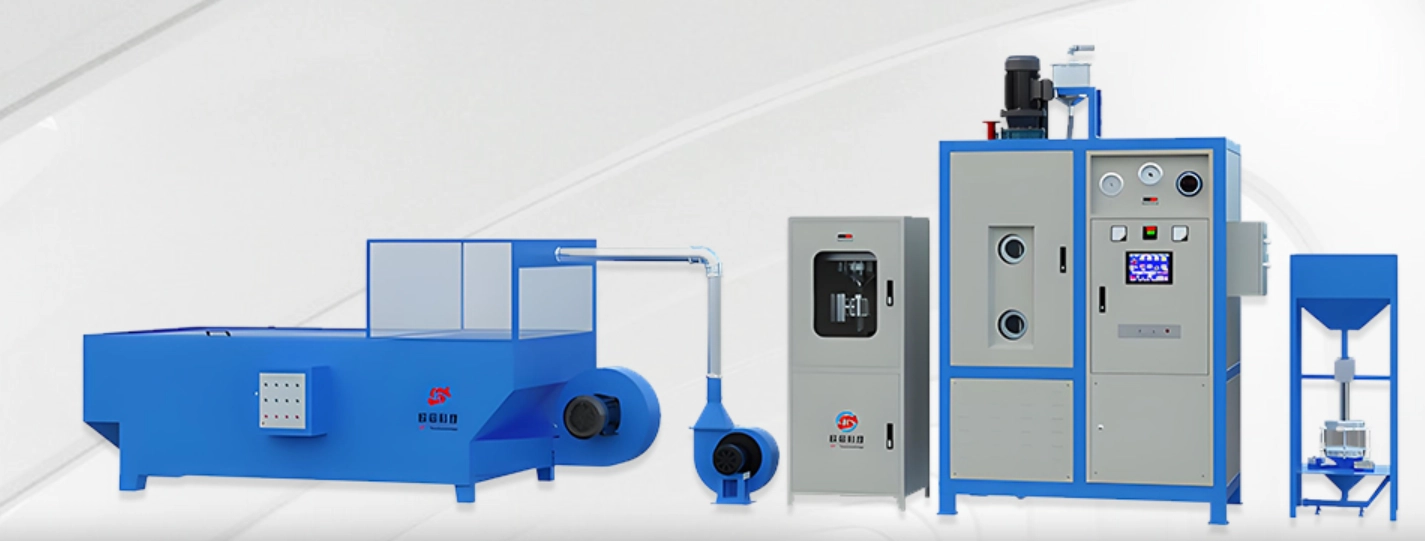
Hangzhou Ouchen Technology Co., LTD is a top maker of smart equipment for lost foam casting. It’s based in Hangzhou’s Fuyang District Xindeng Town. The location offers easy transport. It’s near China’s main EPS equipment production area. The company blends German EPS/EPP tech with its own patents. It provides cutting-edge solutions. These focus on efficiency and being eco-friendly.
The company’s equipment covers every stage of the lost foam casting process:
Pre-Foaming Machines: These machines employ a combination of electromagnetic and steam foaming methods for precise bead preparation. Features like PLC control and remote monitoring ensure operational accuracy.
Maturation Silos: These silos balance internal and external bead pressure through controlled maturation periods. Intelligent systems eliminate static electricity risks during bead transportation.
Hydraulic Forming Machines: Advanced features include vacuum cooling energy recovery systems and automated parameter storage for consistent white mold production.
Central Vacuum Systems: These units maintain stable negative pressure essential for effective metal pouring. The closed-loop heat recovery design underscores environmental responsibility.
Paint Mixers: High-speed mixers ensure even coating application on foam models, enhancing ceramic shell durability.
Choose Hangzhou Ouchen Technology Co., LTD’s EPC equipment. Businesses get top product quality. They also meet strict safety and green standards.

